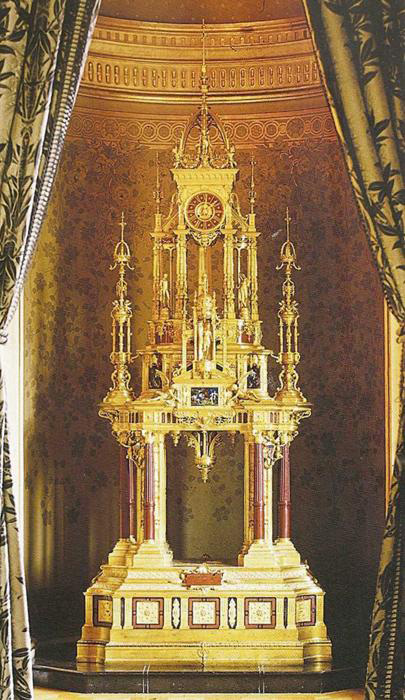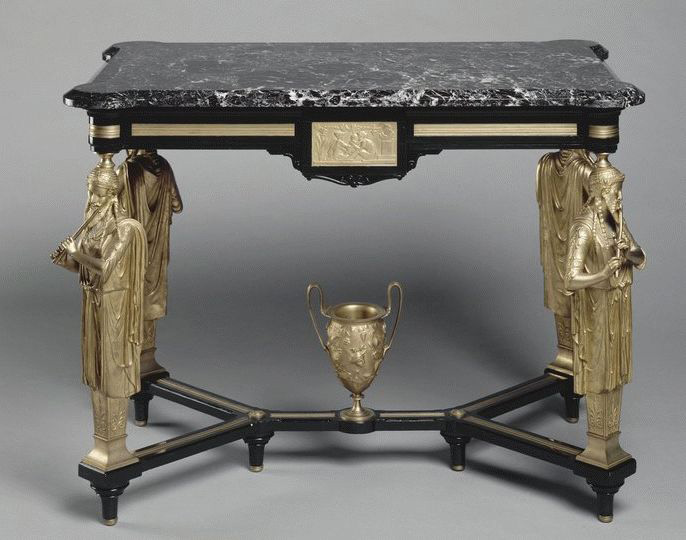Ferdinand Barbedienne
Download PDFThe Barbedienne Foundry is a famous 19th century bronze foundry, whose statues and art objects became rapidly very renowned. This bronze studio co-worked with other trades, and put his name to a great variety of works, such as furnishing in particular. Attending every World's Fair of its time, the Barbedienne Foundry was regularly awarded, notably at the World's Fair of 1855 where it was awarded the Great Medal of Honor.
A Parisian bronze maker and caster, Ferdinand Barbedienne (1810-1892) creates a firm in 1839 in collaboration with Achille Collas, the inventor of the mechanical method to obtain copies of sculptures at a smaller scale. With this groundbreaking proceed, they facilitated an unprecedented production. Under the “Collas et Barbedienne” name, they specialized in Antiquity copies and perfected new chemical methods for the color and patina finish of their bronzes. As a true Romantic, Ferdinand Barbedienne is committed to democratization of arts, he thus realizes numerous Antiquity copies and stimulates his contemporaries’ works broadcasting. A great deal of famous sculptures are hence cast by the Barbedienne Foundry. All his life, Barbedienne co-worked with the greatest artists, sculptors or designers of his time, such as Edouard Lievre, Ferdinand Levillain, Attarge, Aizelin, Barye or Fremiet.
Statues aside, he products a great deal of decorative artifacts, such as clocks, vases, mirrors, etc. Since 1855, Ferdinand Barbedienne collaborates with the famous decoration designer Louis-Constant Sévin (1821-1888). Joining the firm as a sculptor-designer, he stays loyal to it his life long, always finding more new designs for daily objects, which hence become true art works. Sevin’s creations, specialized in the “Neo-Greek” style, were particularly appreciated for antiquity reference in decorative arts, just like the great mirror preserved by the Orsay Museum. He also teams up with enamelers including Alfred Serre, and develops a set of “cloisonnés” enamels that made the headlines at the World's Fair of 1862 in London, which was the very beginning of the art of enamel’s return. In collaboration with Serre, Barbedienne realized between 1878 and 1889 the Monumental Clock in Renaissance style, decorated with enamels, which is preserved in the Paris City Hall.
In 1859, Achille Collas’s death gives him entire property of the foundry. His production’s excellency entitles him Head of the Bronze Industry Committee in 1865. When he died in 1892, his heir Gustave Leblanc-Barbedienne (1849-1945) takes over the foundry, then called “Leblanc-Barbedienne”, specialized in monumental sculptures, and in activity until the mid 20th century. It is Leblanc-Barbedienne that will have the honor to work with Auguste Rodin. The furnishing production is taken over by Paul-Alexandre Dumas, an Art Nouveau artist, Majorelle’s student, who signs several furniture and wallpaper catalogs as “Dumas-Barbedienne” between 1900 and 1906.
Bibliography
Florence Rionnet, Les Bronzes Barbedienne. L'œuvre d'une dynastie de fondeurs (1834-1954), Paris, Arthena, 2016.
















